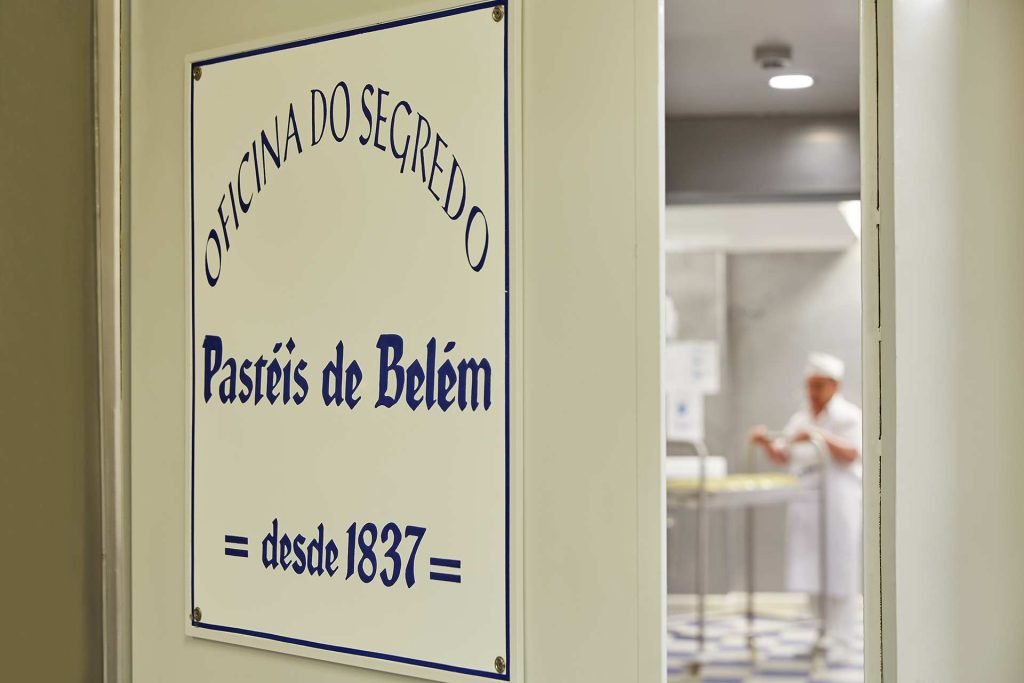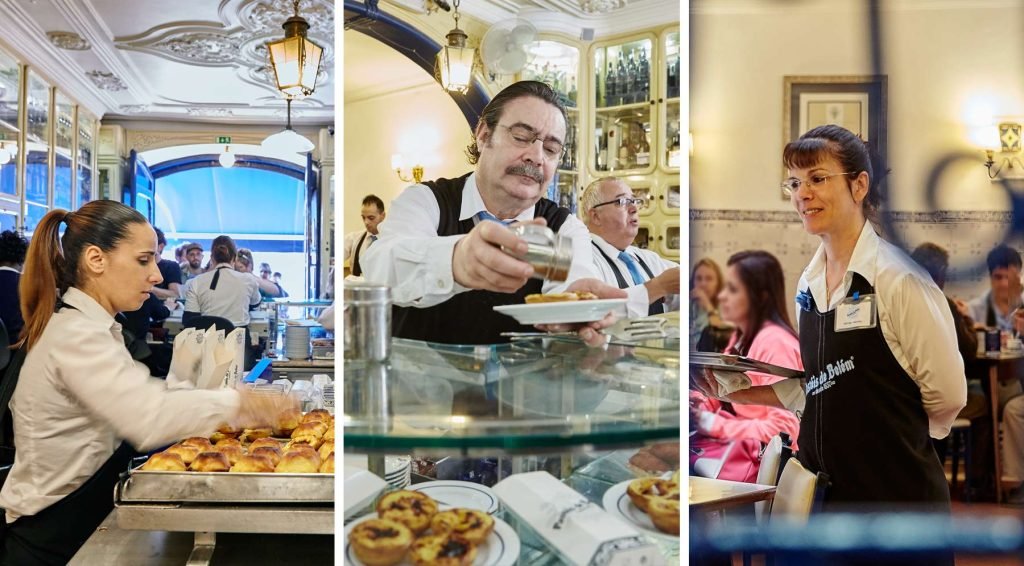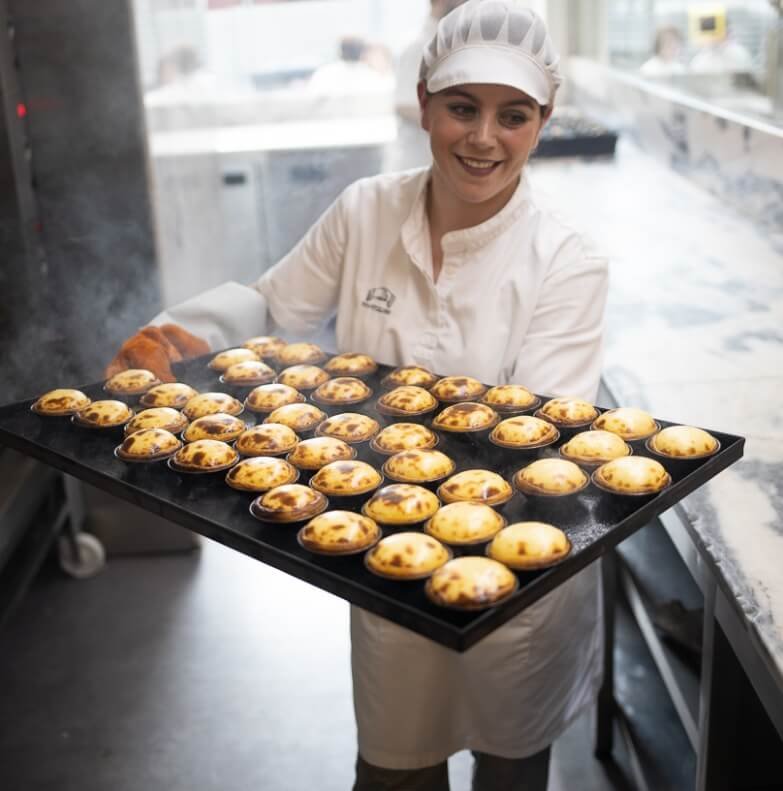Craving a taste of the most famous pastry in Portugal? The iconic Pastel de Nata, a creamy custard tart nestled in a flaky pastry shell, originated in a monastery over 200 years ago is an intriguing blend of history and flavor that has captivated the palates of locals and tourists alike.
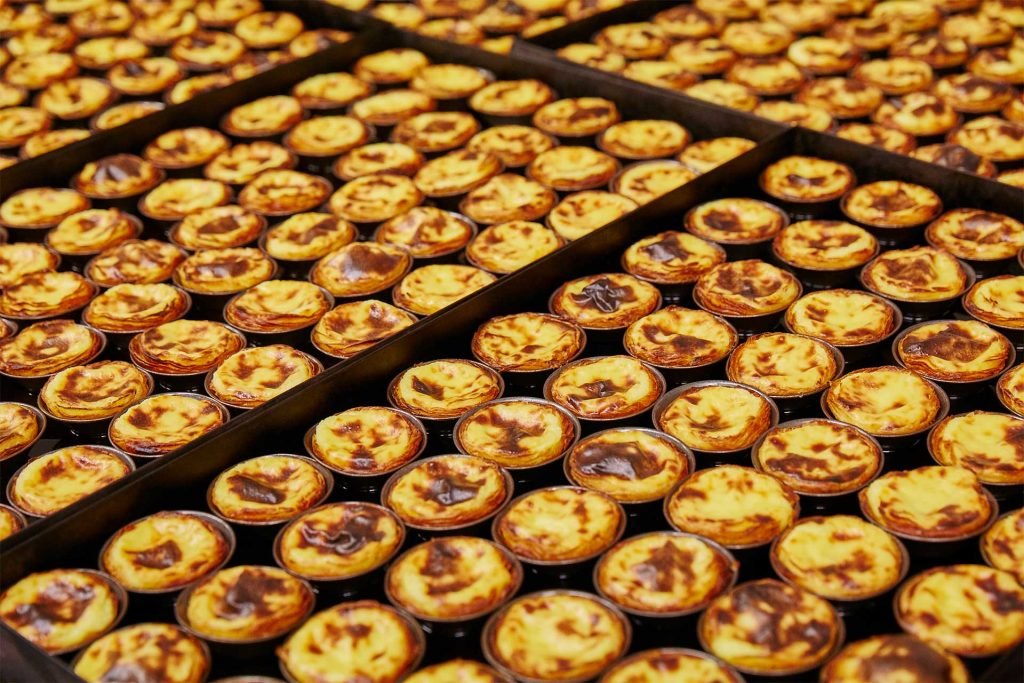
Portugal’s breathtaking scenery, rich history, and vibrant culture attract visitors from all over the world. Although it is also known for its delectable culinary heritage. Pastel de Nata is the most cherished treasures that has captured the hearts of everyone who got a taste of it. The mix of blistered, caramelized custard and flaky golden brown puff pastry is irresistibly delightful and addictive.
Let’s dig into the fascinating story and irresistible charm of Portugal’s most famous pastry—read on to discover why the Pastel de Nata is the most famous pastry in Portugal that promises a delectable experience like no other. You might believe that one is enough, but only if you’ve never tried one.
The Origin of Pastel de Nata
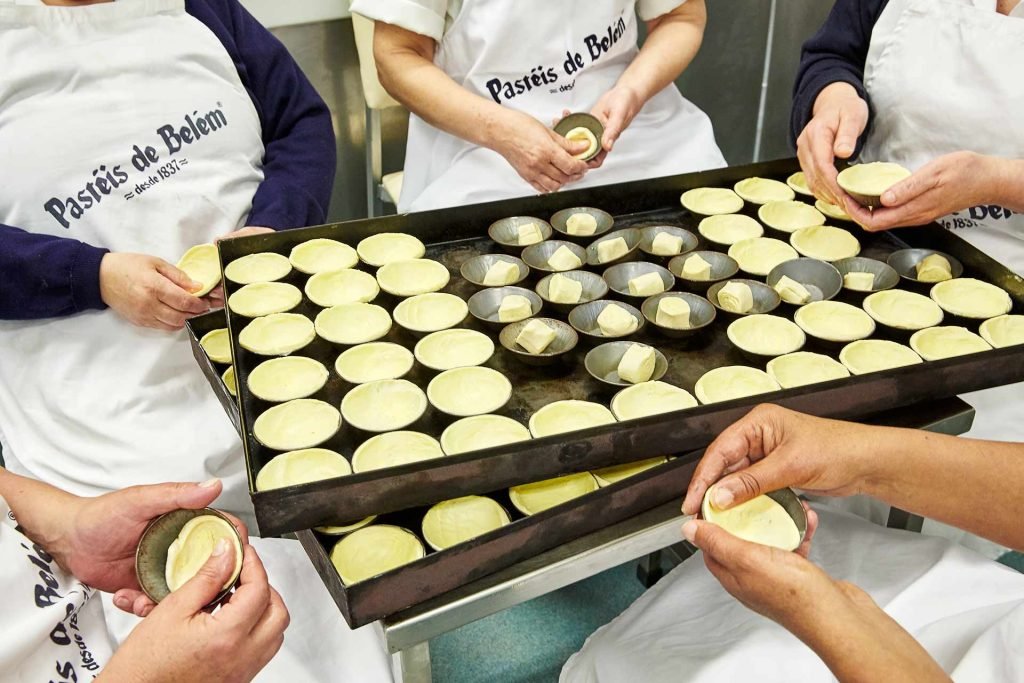
The origin of Pastel de Nata is said to have been created in 1837. This creamy, custard-filled tart has its roots in the Jerónimos Monastery in the Belém district of Lisbon. The monks and nuns used egg whites for starching clothes, leaving an abundance of egg yolks. They started using the leftover egg yolks to create the recipe of a sweet custard, which remained a secret for about a century. This led to the birth of the most famous pastry in Portugal, Pastel de Nata.
A sugar cane refinery adjacent to a small general store existed in Belém around the turn of the nineteenth century, next to the Heironymite Monastery. As a result of the 1820 liberal movement, all convents and monasteries in Portugal were closed in 1834, with clergy and laborers evacuated.In an attempt to survive, someone from the monastery sold delicious pastries to a business man of a Pastry shop. Fábrica dos Pastéis de Belém, a pastry shop located next to the monastery, claims to be the originator of the pastry which quickly became known as ‘Pastéis de Belém’.
Belém was regarded as remote from Lisbon at the time, with access limited to steamboats. At the same time, the magnificence of the monastery and the Torre de Belém (the Belém Tower) drew visitors, who quickly became accustomed to savouring the monastery’s excellent pastries.
Baking of the “Pastéis de Belém” began in 1837 in the refinery’s facilities, using the monastery’s ancient’secret recipe’. This recipe, which was passed down and only known to the expert confectioners who handcrafted the pastries in the’secret room’, has remained intact to this day making it the most famous pastry in Portugal.
What Makes Pastel de Nata The Most Famous Pastry In Portugal?
The Perfect Balance of Flavors
The attraction of Pastel de Nata stems from its exquisite mix of flavors and textures. The crispy, flaky pastry crust cradles a creamy, sweet custard core, resulting in an appealing contrast. A sprinkle of cinnamon and powdered sugar on top gives a delicate spice that complements the overall flavor.
Handcrafted Tradition
While there are several bakeries in Portugal that make custard tarts in Lisbon, Pastéis de Belém remains a family-run business with no subsidiaries or franchises. The original recipe from the monks of Jerónimos Monastery remains a highly guarded secret, since the tart fillings are made in a “Secret Office” where precise ingredients and amounts are measured, with only seven individuals knowing the intricacies. Fábrica dos Pastéis de Belém upholds this heritage of the most famous pastry in Portugal, handcrafting each pastry to assure authenticity and excellence.
Where to Find the Best Pastel de Nata?
Fábrica dos Pastéis de Belém
You may find it in any street corner cafe, but we always recommend going to the source: Pastéis de Belém. Consisting of long waits every day the place has been baking these delectable tarts since 1837 at their factory and pastry café. Fábrica dos Pastéis de Belém, located in Lisbon’s Belém area, is the most well-known bakery serving this renowned dessert. The restaurant draws guests from all over the world to sample the authentic Pastéis de Belém.
Manteigaria
Manteigaria, with sites in Lisbon and Porto, is well-known for serving some of Portugal’s greatest Pastel de Nata. Customers can see the entire manufacturing process, and the company is known for consistently good quality. You can see the mastery and ability required to make a pastel de nata, from forming the dough into the molds to filling it with the cream, which must be positioned precisely up to the edge! Manteigaria’s tarts are a must for pastry lovers to try the most famous pastry in Portugal.
Pastelaria Alcôa

Pastelaria Alcôa, based in Alcobaça, is well-known for its handcrafted pastries, particularly the exquisite Pastel de Nata. With numerous honors under its belt, this bakery guarantees an outstanding dessert experience.
How to Enjoy Pastel de Nata?
Fresh Out of the Oven
The finest way to enjoy a Pastel de Nata is just out of the oven. The warming improves the custard’s creamy smoothness and the pastry’s crispness. Pair it with a cup of strong Portuguese coffee for a really Portuguese pleasure.
With a Sprinkle of Cinnamon
Many locals prefer their Pastel de Nata with a thin dusting of cinnamon or powdered sugar. This classic topping offers a layer of taste that perfectly complements the sweetness of the custard.
Making Pastel de Nata at Home
Making Pastel de Nata at home is a satisfying experience for anyone looking to bring a taste of the most famous pastry in Portugal into your own kitchen. You can create your own version which can be as close a taste to the original as possible. While perfecting the delicate crust and creamy custard takes some practice, the results are definitely worth it. Here’s a simple recipe to get you started.
Ingredients:
- Puff pastry sheets
- 1 cup heavy cream
- 1 cup whole milk
- 3/4 cup granulated sugar
- 1/4 cup flour
- 6 large egg yolks
- 1 tsp vanilla extract
- Cinnamon and powdered sugar for garnish
Instructions:
- Preheat your oven to 475°F (245°C).
- Roll out the puff pastry and cut it into circles to fit your muffin tin. Press the pastry into the tin and set aside.
- In a saucepan, whisk together the cream, milk, sugar, and flour. Cook over medium heat until the mixture thickens.
- Remove from heat and whisk in the egg yolks and vanilla extract.
- Pour the custard mixture into the pastry shells, filling them about 3/4 full.
- Bake for 15-20 minutes or until the pastry is golden brown and the custard is set.
- Allow the tarts to cool slightly, then sprinkle with cinnamon and powdered sugar before serving.
Pastel de Nata is the most famous pastry in Portugal. These little custard treats are available everywhere, with minor variations in the cream and puff pastry used as a shell. The most famous pastry in Portugal is found at Fábrica dos Pastéis de Belém. It is an emblem of Portuguese culture and culinary excellence. Whether consumed in a historic bakery in Lisbon or created from scratch at home, this delectable dish captures the essence of Portugal’s rich culinary culture. So, the next time you visit Portugal, don’t pass up the opportunity to enjoy in the sweet bliss of Pastel de Nata—it’s a taste of history you won’t forget.




